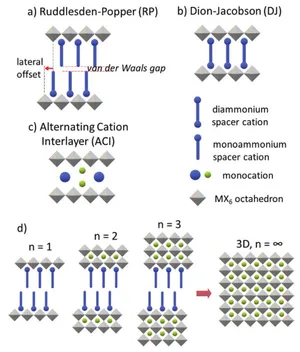News and events
Folusho's review on layered hybrid perovskites is published
Congratulations to Folusho on the publication of her first (joint) first author paper, which is a review of recent progress understanding how layered semiconducting perovskites can be designed and used in photovoltaic applications.
Layered Perovskites in Solar Cells: Structure, Optoelectronic Properties, and Device Design

D. Sirbu, F. H. Balogun, R. L. Milot and P. Docampo
Advanced Energy Materials (May 2021)
Layered hybrid perovskites (LPKs) have emerged as a viable solution to address perovskite stability concerns and enable their implementation in wide-scale energy harvesting. Yet, although more stable, the performance of devices incorporating LPKs still lags behind that of state-of-the-art, multi-cation perovskite materials. This is typically assigned to their poor charge transport, currently caused by the choice of cations used within the organic layer. On balance, a compromise between efficiency and stability is sought, involving careful control of phase purity and distribution, interfaces and energy/charge transfer processes. Further progress is hindered by the difficulty in identifying the fundamental optoelectronic processes in these materials. Here, the high exciton binding energy of LPKs lead to the formation of multiple photoexcited species, which greatly complicate measurement interpretation. In this light, this review gives an overview of how complementary measurement techniques must be used to separate the contributions from the different species in order to identify device bottlenecks, and become a useful tool to narrow down the limitless list of organic cations. A move away from making compromises to mitigate the impact of poor charge transport is required. The root of the problem must be addressed instead through rational design of the interlayer cations.
